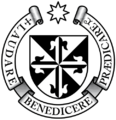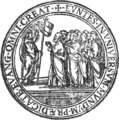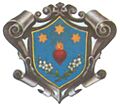History of Guatemala facts for kids
The history of Guatemala is a long and exciting journey! It starts with the amazing Maya civilization, which was one of the greatest cultures in the country. Then, in 1524, the Spanish arrived and took control. For almost 330 years, Guatemala was part of a large Spanish colony called the Captaincy General of Guatemala, which included parts of modern-day Mexico, El Salvador, Honduras, Nicaragua, and Costa Rica.
Guatemala became independent in 1821. It briefly joined the First Mexican Empire and then the Federal Republic of Central America. In 1841, Guatemala became fully independent. Later, in the late 1800s and early 1900s, foreign companies, especially the United Fruit Company (UFC), became very powerful because of Guatemala's rich farmland. These companies were often supported by strict rulers and the United States government.
In 1944, a popular uprising started the ten-year Guatemalan Revolution. During this time, presidents Juan José Arévalo and Jacobo Árbenz brought in big changes, like better education and land reforms. However, the UFC and the US government didn't like these changes. In 1954, the US helped overthrow the government, leading to military rule. This eventually led to a long and difficult Guatemalan Civil War from 1960 to 1996, which caused a lot of suffering, especially for the Maya people. After the war, Guatemala became a democracy again.
Contents
- Ancient Guatemala: Before Columbus
- Colonial Era: Spanish Rule
- Guatemala's Independence Journey
- The 19th Century: A New Nation Forms
- The 20th Century: Challenges and Changes
- Land Reform and UFCO Conflict
- Building Infrastructure
- The Catholic Church and Anti-Communism
- US Intervention: Operation PBSuccess
- Franja Transversal del Norte
- Guerrilla Army of the Poor (EGP)
- Increased Violence and Repression
- Operation Ashes
- Recent Presidents and Anti-Corruption Efforts
- See also
- Images for kids
Ancient Guatemala: Before Columbus
The first people in Guatemala were hunters and gatherers who lived there thousands of years ago. We've found signs of them from as far back as 6500 BC! Over time, these groups learned to farm, especially maize (corn), around 3500 BC. By 2500 BC, small farming villages started to appear along the Pacific coast.
The Maya Civilization Begins
Guatemala's ancient history is split into three main periods:
- Preclassic period (2000 BC to 250 AD): People used to think this was just a time of small farming villages. But recent discoveries show that huge buildings and cities were already being built, like the altar in La Blanca (around 1000 BC) and the early cities of the Mirador Basin, such as Nakbé and El Mirador.
- Classic period (250 to 900 AD): This was the golden age of the Maya civilization! Cities grew, and independent city-states developed. The Maya built amazing temples and pyramids, especially in the Petén region.
- Postclassic period (900 to 1500 AD): Around 900 AD, many Classic Maya cities in the lowlands were abandoned. Scientists think a long drought might have caused this "Classic Maya collapse."
Early Discoveries and Giant Sculptures
Near La Democracia, you can find giant stone heads and "potbelly" sculptures (called barrigones). These date back to around 1800 BC. Some experts believe the ancient Olmec culture might have started in this area, or that the Monte Alto Culture was the first complex civilization in Mesoamerica. Places like Tak'alik A´baj show a mix of Olmec and Maya styles.
El Mirador: A Giant Ancient City
El Mirador was once the biggest city in ancient America! Its pyramids, like El Tigre and Monos, are huge. Experts believe the Maya in the Mirador Basin created the first politically organized state in America around 1500 BC, called the Kan Kingdom. There were 26 cities, all connected by long, wide, stucco-paved highways called sacbeob.
In 2018, archaeologists used special laser technology called Lidar to find over 60,000 hidden structures in northern Guatemala. This showed that Maya cities like Tikal were much larger than we thought. Lidar helped reveal countless houses, palaces, and roads hidden under the jungle. This discovery suggests that 7 to 11 million Maya people lived in northern Guatemala during the late Classic period, which is twice the population of medieval England!
Colonial Era: Spanish Rule
This period covers the years from 1524, when the Spanish arrived, to 1821, when Guatemala became independent from Spain.
The Spanish Conquest of Guatemala
Pedro de Alvarado, a Spanish leader, arrived in Guatemala in 1524. He had Spanish soldiers and hundreds of native allies from Mexico. Alvarado first teamed up with the Kaqchikel people to fight their rivals, the K'iche'. He defeated the K'iche' army, led by their hero Tecún Umán, and burned their capital, Q'umarkaj.
Alvarado then set up a base in Tecpan and continued his conquest, defeating other native groups like the Tz'utujils, Poqomam, and Mam. By 1530, the Kaqchiquels, his former allies, were also defeated. The Spanish gained full control of the region by 1548. It took even longer, until 1697, for the Spanish to conquer the last independent Maya cities in Petén, like Nojpetén.
Guatemala's Independence Journey
The 19th Century: A New Nation Forms
Becoming Independent and Civil War
In 1821, Spain's power was weak, and leaders in Guatemala decided to declare independence. Guatemala then joined the Mexican Empire for a short time. From 1824, it was part of the Federal Republic of Central America. But this republic faced many disagreements, especially between conservative and liberal groups.
In 1826, the Central American Civil War began. A powerful leader named Francisco Morazán emerged from Honduras. He fought against the conservative leaders in Guatemala, who were led by Mariano Aycinena. In 1829, Morazán's forces invaded Guatemala City. After fierce fighting, Aycinena surrendered, and Morazán took control.
Liberal Rule and Reforms
After the conservatives were defeated, Mariano Gálvez, a liberal leader, became the head of state in 1831. He brought many changes:
- He separated the government from the Catholic Church.
- He made public education independent of the Church.
- He started the National Library and Museum.
- He allowed civil marriage and divorce.
However, these changes were very fast for many people, especially the native population. A serious cholera outbreak in the country led to rumors that the government was poisoning the water. This caused peasant revolts to begin in 1837, with people shouting "Hurray for the true religion!" and "Down with the heretics!"
The Rise of Rafael Carrera
A strong leader named Rafael Carrera emerged from these peasant revolts. He was a young, brave leader who gained the trust of the native people. In 1838, liberal forces invaded Guatemala, and they even killed Carrera's father-in-law, which made him swear revenge.
Morazán and his liberal army entered Guatemala City, thinking they had won. But Carrera, using clever tactics, surprised them. He attacked the city, causing heavy losses for Morazán's army. Morazán was forced to flee to El Salvador and later went into exile. This victory made Carrera a very powerful figure.
Los Altos and Carrera's Power
In 1838, a group in Quetzaltenango tried to create their own independent state called Los Altos. This region was very important for Guatemala's economy. Guatemala's government tried to find a peaceful solution, but Los Altos refused. So, Carrera led his army to take back Los Altos. He defeated the liberal leaders there and brought the region back under Guatemala's control. He even had some of the liberal officials shot.
Carrera became the Governor of Guatemala in 1844. On March 21, 1847, Guatemala declared itself an independent republic, and Carrera became its first president. He worked to bring stability to the country and restored good relations with the Catholic Church. He also kept peace between the native people and the criollos (people of Spanish descent born in the Americas).
The Battle of La Arada
In 1851, El Salvador and Honduras formed an alliance and invaded Guatemala, trying to overthrow Carrera. Their army was much larger than Guatemala's. But Carrera, a brilliant military leader, used a clever strategy. He pretended to retreat, drawing the enemy into a trap.
On February 1, 1851, the two armies met at La Arada. Carrera set fire to a sugar cane field, trapping the enemy between the fire, the river, and his own forces. The invading army panicked and fled. Carrera's victory was a huge success, showing his military genius and securing Guatemala's independence.
Treaty with Britain and New Leaders
In 1859, Guatemala signed a treaty with Britain about the borders of Belize. Guatemala recognized British control over Belize, and in return, Britain promised to help build a road connecting Guatemala City to the Caribbean coast. However, this road was never built.
Rafael Carrera died in 1865. His friend, Vicente Cerna y Cerna, became president. In 1871, a "Liberal Revolution" took place, led by Justo Rufino Barrios. Barrios wanted to modernize Guatemala, improve trade, and introduce new crops like coffee. He also dreamed of reuniting Central America and even went to war for it, losing his life in battle in 1885.
Justo Rufino Barrios's Reforms
Barrios was a strong liberal leader who made many big changes:
- He completely separated the Church and the State. He expelled many religious orders and took their properties.
- He stopped mandatory payments to the Church.
- He made civil marriage the only official one.
- He created secular (non-religious) education and established free, mandatory elementary schools.
- He closed the old university and created a new, secular National University.
Barrios also took land from native communities and gave it to army officers and German settlers, especially for coffee plantations. To make sure there were enough workers for these farms, he created "Day Laborer Regulations." These laws forced native people to work on farms, often trapping them in debt, and made it hard for them to leave.
After Barrios died, Manuel Lisandro Barillas became president. He was unique because he peacefully handed over power to his successor, José María Reina Barrios, in 1892.
The 20th Century: Challenges and Changes
Manuel Estrada Cabrera's Long Rule (1898–1920)
After Reina Barrios was assassinated in 1898, Manuel Estrada Cabrera became president. He ruled for 22 years, one of the longest dictatorships in Guatemalan history. He was known for his harsh methods and for having a network of spies.
One of his most important decisions was allowing the United Fruit Company (UFCO) to become very powerful in Guatemala. He gave them special tax breaks, land, and control over railroads on the Atlantic coast. This helped the company grow but gave them huge influence over Guatemala's economy and politics.
Estrada Cabrera was eventually forced to resign in 1920 after new revolts.
Jorge Ubico's Strict Government (1931–1944)
In 1931, General Jorge Ubico became president, supported by the United States. His government was very strict. Like Estrada Cabrera, he used spies and punished political opponents severely. He was a wealthy man and strongly sided with the United Fruit Company and big landowners.
To ensure enough workers for coffee plantations, Ubico enforced a system of forced labor and debt. He even passed laws that allowed landowners to punish workers as a "disciplinary" measure. He admired leaders like Mussolini and Hitler. While he was a harsh ruler, he was also an efficient administrator, cutting government salaries and fighting crime in Guatemala City.
The October Revolution (1944)
After 14 years, people grew tired of Ubico's harsh rule. In 1944, peaceful protests and a general strike forced him to resign. He tried to pick a successor he could control, but eventually, a group of soldiers and students, led by Jacobo Árbenz and Francisco Javier Arana, attacked the National Palace on October 19, 1944. This event is known as the "October Revolution."
They defeated Ubico's chosen successor and set up a temporary government, promising democratic elections. Juan José Arévalo, a university professor, won the 1944 elections with a large majority.
President Juan José Arévalo (1945–1951)
Arévalo brought in many social reforms, like minimum wage laws, more money for education, and labor reforms. However, these changes mainly helped the middle classes and didn't do much for the poor farmers. The United States government, the Catholic Church, and large landowners disliked his government, seeing it as too influenced by communists. There were many attempts to overthrow him during his presidency.
President Jacobo Árbenz Guzman (1951–1954)
Jacobo Árbenz became president in 1951. He promised to turn Guatemala into a modern country and reduce its dependence on foreign companies. His main goal was land reform.
Land Reform and UFCO Conflict
Árbenz's most important plan was the Decree 900 in 1952. This law allowed the government to take unused land from very large farms and give it to poor families. Owners were paid for the land based on what they had declared for tax purposes, which was often a very low amount. Árbenz himself gave up some of his own land for the program. This reform helped about 100,000 families and significantly increased farmers' incomes.
The United Fruit Company (UFCO) was very unhappy because a lot of their unused land was taken. They argued that the compensation was too low and that the land was actually in use. The US government, influenced by UFCO, started to view Árbenz's government as a communist threat.
Building Infrastructure
Árbenz also started building important projects to help Guatemala's economy become more independent:
- Atlantic Highway: This road was built to compete with the railroad, which was controlled by a UFCO subsidiary.
- Santo Tomas de Castilla Port: A new port was built to compete with Puerto Barrios, which was also controlled by UFCO.
- Jurun Marinalá Power Plant: This hydroelectric plant was planned to provide cheaper electricity and reduce reliance on foreign companies that used imported fuel.
The Catholic Church and Anti-Communism
The Catholic Church, which had lost much of its power since independence, saw Árbenz's government as a threat. Archbishop Mariano Rossell y Arellano allied with groups that wanted to overthrow the government, calling them "atheists" and "communists." In 1954, he issued a letter urging Guatemalans to fight communism.
US Intervention: Operation PBSuccess
The US government, especially under President Eisenhower, was very concerned about communism during this time (known as McCarthyism). They believed Árbenz was too close to communists, even though he was a democratic socialist. The US ambassador, John Peurifoy, openly expressed these concerns.
The Central Intelligence Agency (CIA) then planned a secret operation called Operation PBSuccess. They armed and trained groups of Guatemalan exiles, led by Colonel Carlos Castillo Armas. On June 18, 1954, these forces invaded Guatemala. With the help of CIA radio broadcasts that spread false information, the Guatemalan army refused to fight. Árbenz was forced to resign and go into exile.
After the CIA-backed coup, a military government took over. Hundreds of Guatemalans were killed, and the land reform program was stopped.
The Civil War (1960–1996)
The 1954 coup led to a long and brutal Guatemalan Civil War that lasted 36 years. This war was caused by deep social and economic problems, racial discrimination against the native population, and the military's strong control. The US supported the government, while Cuba supported the rebels.
More than 200,000 people were killed during the war, mostly native civilians. A "Truth Commission" after the war found that most human rights abuses were committed by the military or government-supported forces. They also found that the government was responsible for acts of genocide against the Maya people.
In 1960, a group of young military officers revolted against the government. When they failed, some went into hiding and formed the core of the guerrilla movement that fought the government for decades.
In 1966, Julio César Méndez Montenegro became president, the only civilian leader for many years. However, the military still held much power. The guerrillas focused their attacks in Guatemala City, even assassinating the US Ambassador in 1968.
Franja Transversal del Norte
This was a region in northern Guatemala that the government wanted to develop for agriculture and resources like oil and nickel. In the 1960s and 70s, the government encouraged people to move there, often giving land to native peasants. However, this also led to conflicts over land and resources.
Guerrilla Army of the Poor (EGP)
In 1972, a new guerrilla group called the Guerrilla Army of the Poor (EGP) started operating in the northern mountains. They gained support from many farmers and aimed to bring "social justice." They carried out actions, including "executions" of people they saw as corrupt or unjust.
Increased Violence and Repression
The election of Fernando Romeo Lucas García as president in 1978 marked a return to very harsh military rule. The government intensified its fight against the guerrillas and the civilian population, fearing a revolution like the one happening in Nicaragua.
In 1978, a peaceful peasant demonstration in Panzós was attacked by the military, killing many native people. This event caused outrage, especially at the University of San Carlos, which became a center of protest against the government.
Civil War in the City
The conflict also spread to Guatemala City. In 1980, the Spanish Embassy was burned down during an occupation by native people protesting army actions, killing 37 people. Spain broke off diplomatic relations with Guatemala. Guerrilla groups also carried out terrorist attacks against government and business targets in the city.
Operation Ashes
In 1981, the army launched a major operation called "Operación Ceniza" (Operation Ashes) to separate the guerrillas from the civilian population. During this operation, thousands of troops swept through native highland regions. The army killed large numbers of unarmed civilians, burned villages and crops, and destroyed animals, leaving survivors with nothing. Estimates of civilian deaths in 1981 ranged from 9,000 to 13,500.
The US, under the Reagan administration, provided helicopters and military trucks to the Guatemalan Army.
In 1982, the main guerrilla groups formed the Guatemalan National Revolutionary Unity (URNG). At the same time, extreme right-wing groups also killed students, professionals, and peasants suspected of supporting the left.
On March 23, 1982, military officers staged a coup, preventing the chosen candidate from taking power. They asked retired General Efraín Ríos Montt to lead the country. Ríos Montt, a lay pastor, believed his presidency was God's will. He suspended the constitution and dissolved Congress.
Ríos Montt tried to defeat the guerrillas with a mix of military action and reforms, calling it "rifles and beans." He formed local civilian defense patrols (PACs), forcing many rural men to join. While he pushed back the insurgents, it came at a terrible cost, with thousands of unarmed native civilians killed. His presidency was one of the most violent periods of the war.
In 1983, Ríos Montt was overthrown by his defense minister, General Óscar Humberto Mejía Víctores. Mejía Víctores allowed a return to democracy, leading to the election of Vinicio Cerezo, a civilian president, in 1986.
From Constitution to Peace Accords (1986–1996)
President Cerezo's government aimed to end political violence and establish the rule of law. They created new human rights laws and an Office of Human Rights Ombudsman. The military returned to its role of providing internal security.
However, Cerezo's later years were marked by economic problems and corruption. In 1991, Jorge Antonio Serrano Elías became president. He tried to make peace with the URNG guerrillas and recognized Belize's independence, which was a big step.
In 1993, Serrano tried to illegally dissolve Congress and the Supreme Court, but strong protests from society and the army stopped him. He fled the country. Ramiro de León Carpio, the Human Rights Ombudsman, was then elected president. He pushed for anti-corruption reforms.
Under de León, peace talks with the URNG gained new life, helped by the United Nations. They signed agreements on human rights and indigenous rights. In 1996, Álvaro Arzú Irigoyen was elected president. His administration successfully concluded the peace negotiations, and the government signed peace accords in December 1996, officially ending the 36-year civil war.
After the Peace Accords (1996–Present)
In 1999, Alfonso Portillo became president. He promised to continue the peace process and strengthen human rights. However, progress was slow, and public support for his government declined.
In 2003, Óscar Berger was elected president. In 2005, Guatemala was hit by Hurricane Stan, causing widespread flooding and many deaths. To fight crime and corruption, Berger's government worked with the United Nations to create the International Commission against Impunity in Guatemala (CICIG) in 2006. CICIG was an independent body that helped investigate and prosecute organized crime and corruption.
Recent Presidents and Anti-Corruption Efforts
In 2012, retired general Otto Pérez Molina became president, with Roxana Baldetti as the first woman vice president. However, in 2015, CICIG revealed a huge corruption scandal called "La Línea," involving high-ranking officials, including the vice president's secretary. This led to massive public protests, with thousands of people demanding resignations.
Vice President Baldetti resigned and was arrested. CICIG continued to expose more corruption cases, leading to many government officials stepping down or being arrested. On August 21, 2015, CICIG presented evidence suggesting President Pérez Molina and former Vice President Baldetti were the leaders of "La Línea."
After huge protests and pressure, President Pérez Molina resigned on September 2, 2015, and was later arrested.
In October 2015, former TV comedian Jimmy Morales was elected president, promising to fight corruption. He took office in 2016. In 2017, he announced that Guatemala would move its embassy in Israel to Jerusalem, following the United States.
In January 2020, Alejandro Giammattei became president, focusing on a "tough-on-crime" agenda. In November 2020, large protests occurred against his government due to cuts in education and health spending.
In August 2023, Bernardo Arévalo, the son of former president Juan José Arévalo, won the presidential election by a large margin. He was sworn in as president on January 14, 2024.
See also
 In Spanish: Historia de Guatemala para niños
In Spanish: Historia de Guatemala para niños
- List of presidents of Guatemala
- Politics of Guatemala
- Route of the Agroindustry and the Architecture Victoriana of Guatemala
- Route of the Dominican Evangelisation of Guatemala
- Route of the Franciscan Evangelisation in Guatemala
- Spanish colonization of the Americas
- Timeline of Guatemala City
Images for kids







